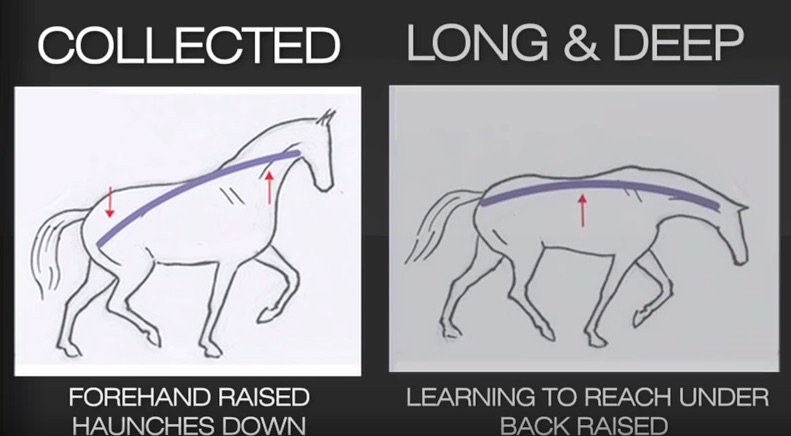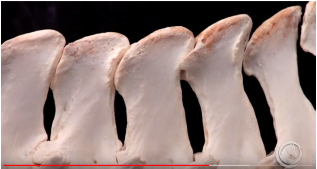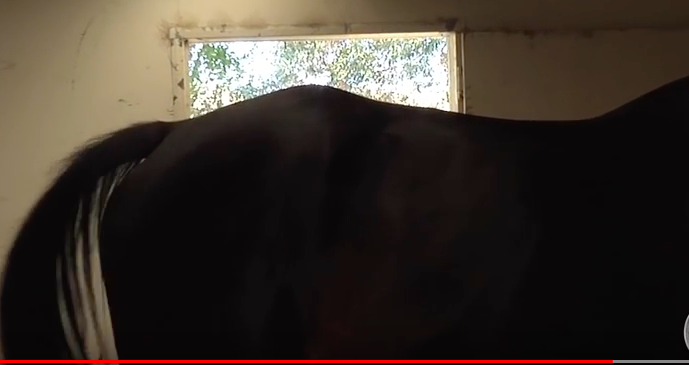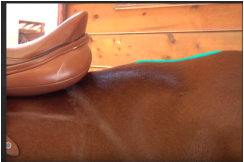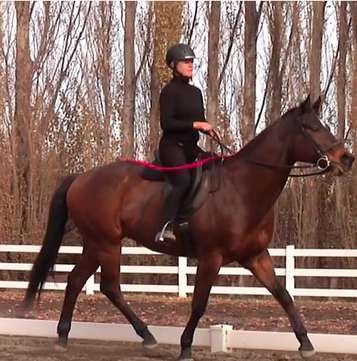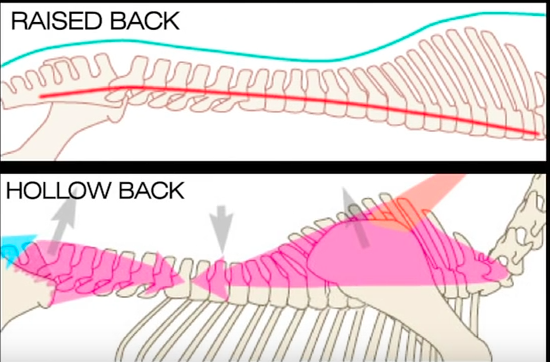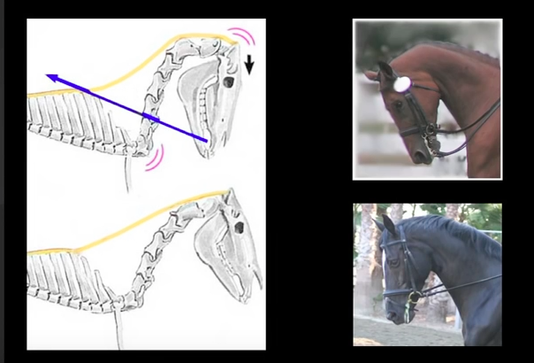How To Engage Your Horse's Back In Order To Develop A Strong Topline
The key to a keeping your horse sound and moving forward with energy is engaging his back. Here's how it's done.
The key to a keeping your horse sound and moving forward with energy is engaging his back. Here's how it's done.
"Engage his back!" called the trainer. "If I had a 'real' dressage horse, I'd have an easier time engaging his back", fumed Doris silently. "But I don't have that kind of money."
"Topline, topline, topline—I'm so sick of hearing about my horse's weak topline", thought Ralph, as he ignored his trainer and aimed his horse for the next jump. "That's all just to make the horse look pretty, right?"
If you're like Doris, you may be surprised to find that the most common culprit preventing a horse from engaging his back properly isn't poor conformation or lack of pedigree but improper riding. If you're like Ralph then it may come as a surprise to find all of the following conditions stem from a common problem: A weak topline—the section of a horse's body that extends from the poll to the croup.
"Topline, topline, topline—I'm so sick of hearing about my horse's weak topline", thought Ralph, as he ignored his trainer and aimed his horse for the next jump. "That's all just to make the horse look pretty, right?"
If you're like Doris, you may be surprised to find that the most common culprit preventing a horse from engaging his back properly isn't poor conformation or lack of pedigree but improper riding. If you're like Ralph then it may come as a surprise to find all of the following conditions stem from a common problem: A weak topline—the section of a horse's body that extends from the poll to the croup.
In each case, the deformities were caused by riding a horse with a hollow back and over arched neck. Here is what an inverted back looks like under saddle (left) and what it does to a horse's spine (right).
If the rider then also pull the reins in an attempt to "get the horse in an upper level frame", the third and fourth vertebra in the horse's neck end up separating, like this:
In this excellent video, trainer Karen Loshbaugh and Equine Veterinarians Dr. Joanna Robson, Dr. Sarah le Jeune, and Dr Sue Dyson explain why proper engagement of the horse's core is crucial for avoiding these debilitating and painful back injuries.
In this excellent video, trainer Karen Loshbaugh and Equine Veterinarians Dr. Joanna Robson, Dr. Sarah le Jeune, and Dr Sue Dyson explain why proper engagement of the horse's core is crucial for avoiding these debilitating and painful back injuries.
While the video is quite detailed in explaining why core engagement is so important in avoiding these disorders, it is a bit light on how it is done. The steps are straightforward.
Six Steps to Building a Strong Topline

1. Make sure you have a secure, flexible, and following seat.
Do you grip with your thighs or knees? Do you grip with your calves even when you are not in two-point? Then you do NOT have a secure and following seat.
Three Secrets To A Secure Seat
Do you grip with your thighs or knees? Do you grip with your calves even when you are not in two-point? Then you do NOT have a secure and following seat.
Three Secrets To A Secure Seat
2. Make sure you have an elastic rein contact.
A horse will NOT go forward into fixed, rigid, nervous, twitchy, loose, or unfeeling hands. Kick or tap all you want with your whip. It's a losing battle. But a horse will willingly go forward into an elastic, feeling contact. In fact, he will seek contact with your hands.
Elastic-Contact: How to develop elastic rein contact
A horse will NOT go forward into fixed, rigid, nervous, twitchy, loose, or unfeeling hands. Kick or tap all you want with your whip. It's a losing battle. But a horse will willingly go forward into an elastic, feeling contact. In fact, he will seek contact with your hands.
Elastic-Contact: How to develop elastic rein contact

3. Put your horse “on the bit”.
“On the bit” does NOT mean keeping a horse's face on the vertical. It means keeping your horse engaged throughout her body through a connection with your hands and your seat. Both of the horses in the photo are ‘on the bit’.
Getting a Horse On The Bit
“On the bit” does NOT mean keeping a horse's face on the vertical. It means keeping your horse engaged throughout her body through a connection with your hands and your seat. Both of the horses in the photo are ‘on the bit’.
Getting a Horse On The Bit

4. Encourage your horse to raise and stretch his back while under saddle.
This is what the video refers to as a "long and low" carriage. This is NOT the same thing as "peanut rolling", a term used by Western riders to describe a horse that is not engaged and is simply "all on his forehand".
How To Get Your Horse to Stretch Down
This is what the video refers to as a "long and low" carriage. This is NOT the same thing as "peanut rolling", a term used by Western riders to describe a horse that is not engaged and is simply "all on his forehand".
How To Get Your Horse to Stretch Down

5. Engage your horse's hindquarters
Your horse’s hindquarters are the powerful engine that drives all of his gaits and keeps him "on the bit".
How to Engage a Horse's HIndquarters
6. Execute a perfect half halt.
No, half halt doesn't mean slowing your horse down. It means rebalancing him and putting him back "on the bit" with more engagement from his hindquarters.
How To Half Halt Your Horse
Your horse’s hindquarters are the powerful engine that drives all of his gaits and keeps him "on the bit".
How to Engage a Horse's HIndquarters
6. Execute a perfect half halt.
No, half halt doesn't mean slowing your horse down. It means rebalancing him and putting him back "on the bit" with more engagement from his hindquarters.
How To Half Halt Your Horse
When all of these things are in place, you are read for collection.
How To Collect Your Horse
You can also use side reins to help you develop your horse's topline.
How to Use Side Reins to Improve Your Horse's Topline
Happy riding!
Copyright Denise Cummins, PhD April 27, 2016; Updated June 23. 2024
The Thinking Equestrian
As long as you’re here, check these out!
Equestrian Products That Make Your Riding and Horse Care Easier and Better!
How to Get a Horse to Lengthen His Stride
How To Leg Yield or Side Pass A Horse
What’s the Difference Between Working, Medium, and Extended Trot?
How To Collect Your Horse
You can also use side reins to help you develop your horse's topline.
How to Use Side Reins to Improve Your Horse's Topline
Happy riding!
Copyright Denise Cummins, PhD April 27, 2016; Updated June 23. 2024
The Thinking Equestrian
As long as you’re here, check these out!
Equestrian Products That Make Your Riding and Horse Care Easier and Better!
How to Get a Horse to Lengthen His Stride
How To Leg Yield or Side Pass A Horse
What’s the Difference Between Working, Medium, and Extended Trot?
